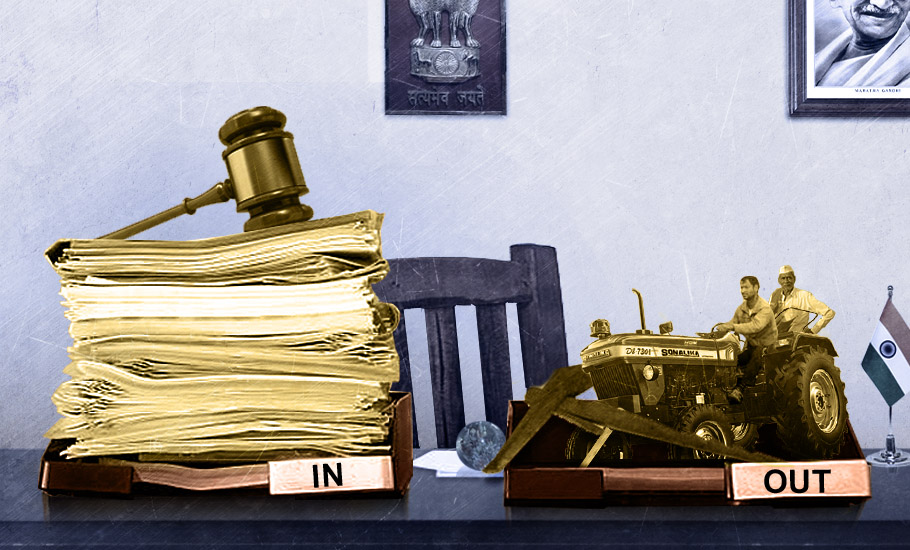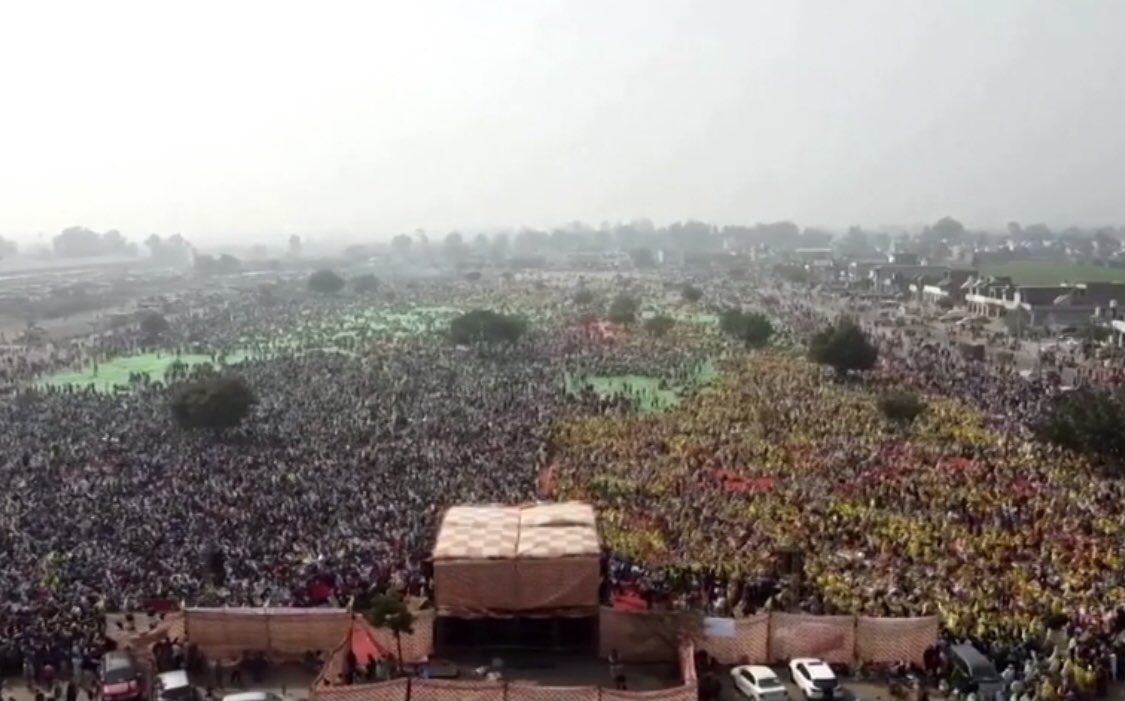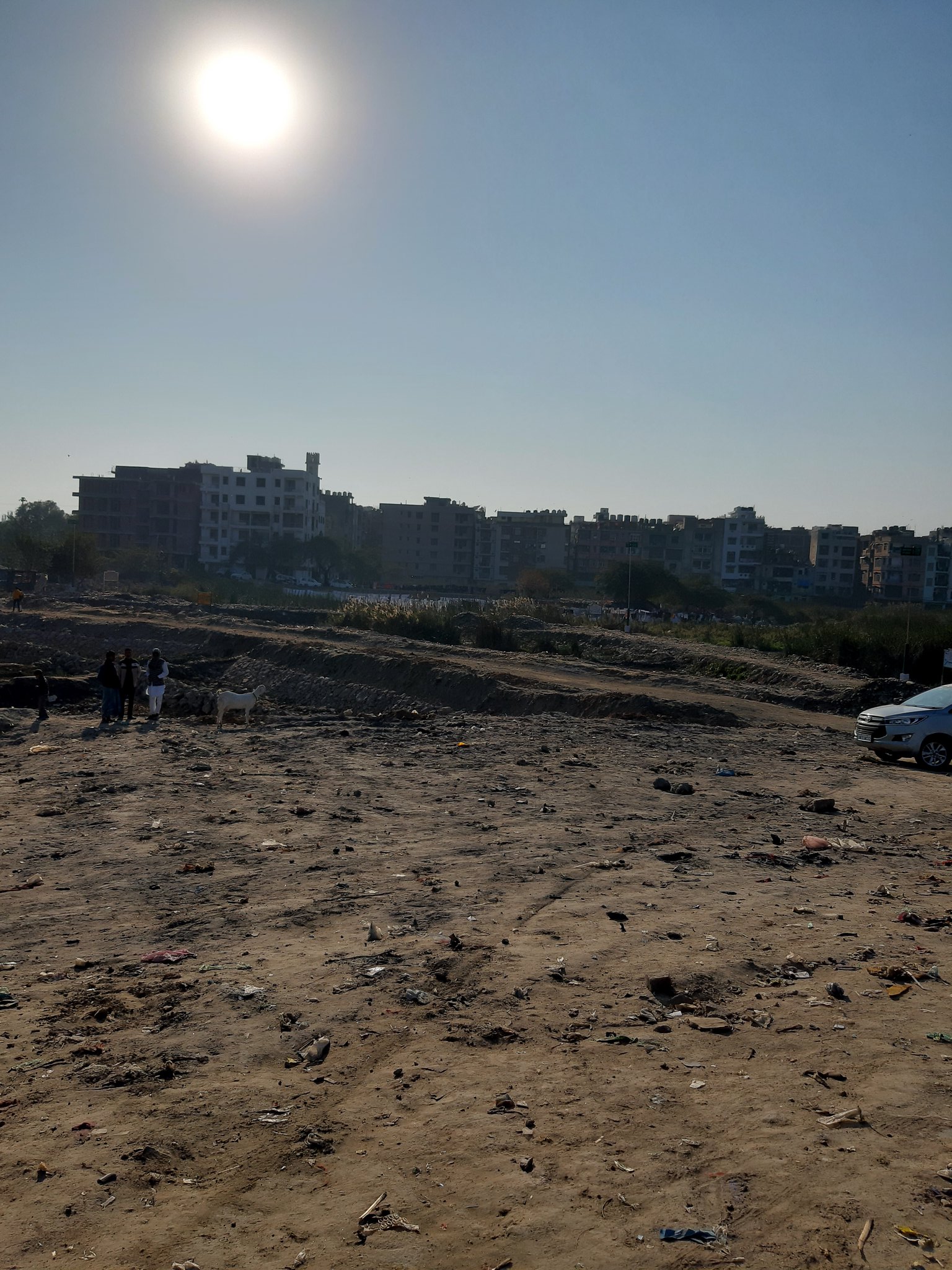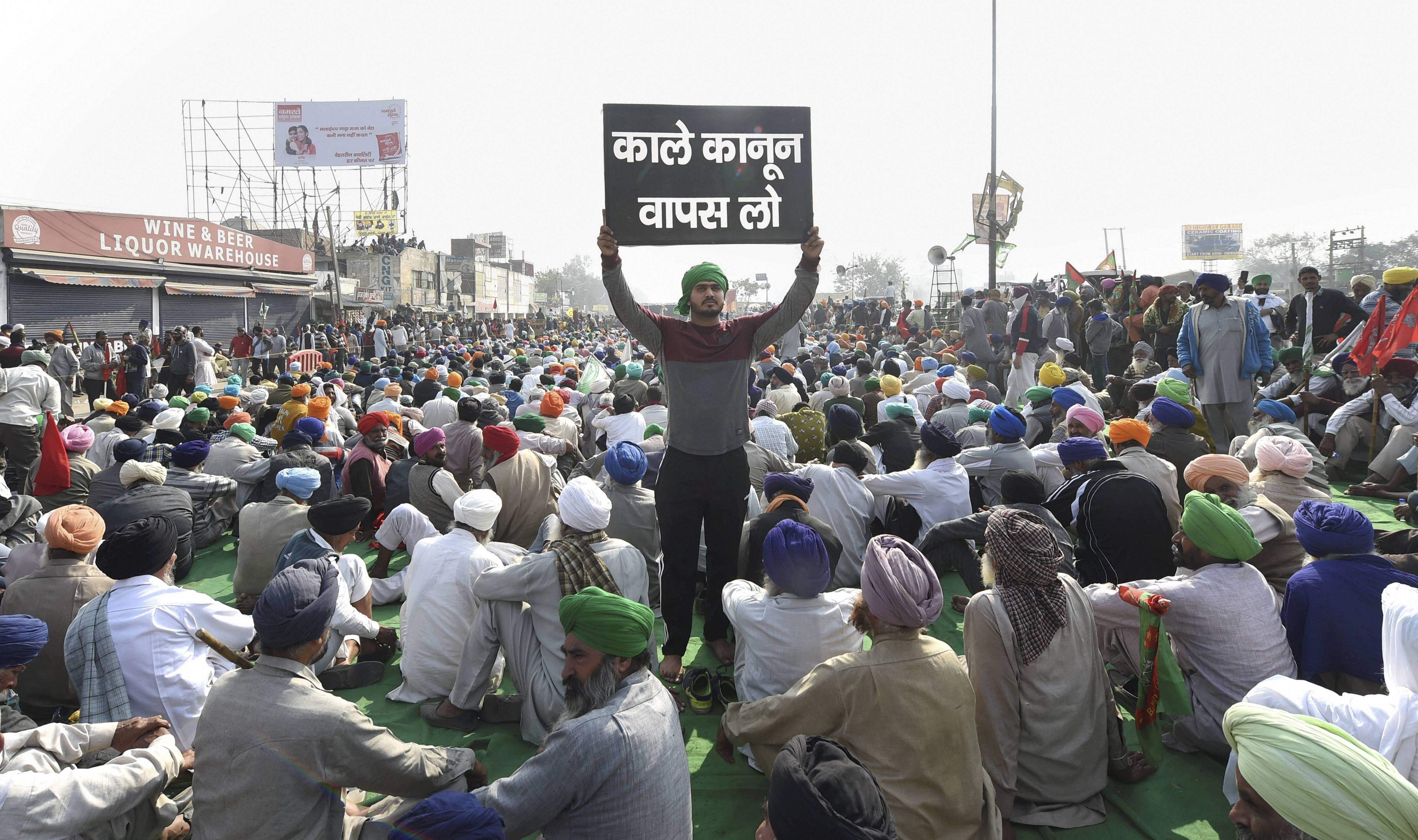
- Home
- India
- World
- Premium
- THE FEDERAL SPECIAL
- Analysis
- States
- Perspective
- Videos
- Sports
- Education
- Entertainment
- Elections
- Features
- Health
- Business
- Series
- In memoriam: Sheikh Mujibur Rahman
- Bishnoi's Men
- NEET TANGLE
- Economy Series
- Earth Day
- Kashmir’s Frozen Turbulence
- India@75
- The legend of Ramjanmabhoomi
- Liberalisation@30
- How to tame a dragon
- Celebrating biodiversity
- Farm Matters
- 50 days of solitude
- Bringing Migrants Home
- Budget 2020
- Jharkhand Votes
- The Federal Investigates
- The Federal Impact
- Vanishing Sand
- Gandhi @ 150
- Andhra Today
- Field report
- Operation Gulmarg
- Pandemic @1 Mn in India
- The Federal Year-End
- The Zero Year
- Science
- Brand studio
- Newsletter
- Elections 2024
- Events
- Home
- IndiaIndia
- World
- Analysis
- StatesStates
- PerspectivePerspective
- VideosVideos
- Sports
- Education
- Entertainment
- ElectionsElections
- Features
- Health
- BusinessBusiness
- Premium
- Loading...
Premium - Events

What the fate of these Delhi farmers tells us about new farm laws
Farmers in Delhi's villages say they are left in the lurch with land pooling policy, and are not getting loans, MSP or other benefits.

Unlike the much-romanticised lush green fields of paddy and mustard, life in Jitendra Yadav’s village, Jhuljhuli, in southeast Delhi smells and tastes every bit like the polluted capital city—acrid. As protests against new farm laws continue at Delhi’s borders, Yadav and scores like him feel one need not go far from the national capital to see the sufferings of farmers that...
Unlike the much-romanticised lush green fields of paddy and mustard, life in Jitendra Yadav’s village, Jhuljhuli, in southeast Delhi smells and tastes every bit like the polluted capital city—acrid.
As protests against new farm laws continue at Delhi’s borders, Yadav and scores like him feel one need not go far from the national capital to see the sufferings of farmers that successive governments failed to take into account.
Not too far from the political chaos on display inside and outside Parliament, farmers on the city’s fringes are struggling to make sense of the urbanisation that is shrinking their farmlands.
Urban villages
According to 1941 Census figures, there were 354 villages in Delhi. After 1947, the government acquired many villages to rehabilitate displaced persons from Pakistan. Consequently, the number came down to 258, including 15 uninhabited villages, in 1971.
Similarly, the rural area in Delhi shrank to 25 per cent in 2011 from 78 per cent in 1961, according to the Delhi Planning Commission.
The villagers say that their situation worsened after 1990 when gram panchayats were dissolved and the villages came under the Municipal Corporation of Delhi (MCD). This, they allege, was done to acquire their land.
“I can only think of one reason why the panchayats were dissolved,” says Jitendra. “If the government had to urbanise a village and acquire land, it needed permission from panchayats. But now that it comes under the MCD, the government can easily urbanise the villages.”
In 1992, the 73rd Amendment of the Constitution envisaged the gram sabha as the foundation of the Panchayat Raj system. To develop villages, the government gave power to panchayats across India.
“But in Delhi, the panchayats were abolished. Currently, there is no one in Delhi’s villages to monitor its development. There are no schools, roads, water and electricity in the villages and we need to travel 16 km to the MCD office. But they still don’t listen to our problems,” Jitendra adds.
After the panchayats were dissolved, 40 villages were urbanised over the next decade. This left Delhi with around 220 villages in 2011.

Land pooling policy
After 1990, farm land was acquired at a rapid pace by the government and private players. According to Jitendra, the government used to give just ₹15 lakh per acre in 2005. “Whereas, in other parts of the country, farmers used to get more than ₹45 lakh per acre.”
The villagers protested against the government, saying that it was not integrated development and only the government benefited from acquiring the land as they bought it at low prices, carved out colonies and sold them at higher prices.
In 2006, the Delhi Development Authority (DDA) came up with the Master Plan 2021. A few years later, it brought a Land Pooling Policy (LPP) for Delhi villages to “benefit farmers”.
As per the LPP, landowners living in notified villages could pool in their land either themselves or with the help of private developers and hand it over to the DDA, which would be responsible for developing infrastructure before returning it to the owner.
Under the LPP, 60 percent of the pooled land will be returned to landowners after development, if the area is 20 hectares or more. If the land pooled is between 2 and 20 hectares, then only 48 per cent will be returned. Of the 60 per cent of the returned land, 53 per cent will be for residential purpose, 5 per cent for city-level commercial use and 2 per cent for public and semi-public use. In the second case, the same will be 43, 3 and 2 per cent, respectively.
Jitendra says the policy is useless and will not help villagers and farmers.
“According to the policy, for every acre we pool in, 60 percent of the area will go under development. For that, we have to give an external development charge of ₹1.5-2 crore per acre. In addition to this, our 40 per cent area will be acquired for free. On one hand, we are giving our land, and on the other hand, we have to give money as well. From where will the farmers bring ₹2 crore per acre?”
The DDA’s justification for this, according to its FAQs on LPP: “The value of land will increase soon after the implementation of LPP. Return of developed land/built-up space with appreciated land value will make landowners partners in the development process. The planned development will also increase the value of their land through the provision of infrastructure and public facilities. The outcomes are expected to be world class ‘smart’ and sustainable neighbourhoods, sectors and zones, planned and executed as per the availability of water, power and other infrastructure.”
Yadav dismisses this argument, saying, “If we are investing ₹2 crore on our land, its cost will automatically increase. But we don’t have that much money.”
Also, he adds, when there are no companies or factories nearby, why would people come to live in a village like Jhuljhuli. “The DDA had said in 2007 that it will construct 13 lakh flats. Where are those flats? It didn’t construct them because no one was buying them.”

No mutation, loans or farm benefits
In 2013, the LPP was notified but it took the Ministry of Housing and Urban Development two more years to frame the operational rules. In May 2017, 95 more villages had been notified as “urban areas” by DDA and declared “development areas” under LPP.
Among those 95 villages, one was Yadav’s Jhuljhuli. Thereafter, farmers say, the authorities stopped mutation of land. This is what is making Deepak Kumar’s life miserable.
“After our village was declared urban four years ago, our land mutation was stopped. I could not transfer the land which was in my grandfather’s name to my own. Because of this I can’t get loans or subsidies as we need land documents in our name to get such benefits,” says Kumar.
He adds: “Whenever we go to the patwari (revenue department official), he directs us to the DDA. When we go to the DDA, it directs us back to patwari.”
Another farmer, Kuldeep Yadav, tells The Federal, “I wanted to take a loan for the higher education of my son, but I could not because the land is in my father’s name.”
An Indian Express report quoted senior officers from the Delhi revenue department and the DDA as saying that land mutation requests are not being processed in all ‘urban’ villages in Delhi. The officials added that there is a need for a uniform law to address the issue.
A revenue department official told the daily since “our laws do not apply to these villages, and they have been handed over to the DDA, we cannot process land mutation requests”.
“We do not process land mutation requests in any case, and in this instance the villages have been handed over to us but the land records are still with the revenue department,” the same news report quoted an unnamed officer from the DDA’s land management department.
The farmers’ woes don’t end here.
No MSP
Farmers in the national capital allege that they are not getting minimum support price (MSP) for any of their crop for the past five years as the Food Corporation of India (FCI) is not procuring grains at any of the three APMCs (mandis) in Narela, Najafgarh and Mayapuri.
“FCI, which comes under the central government, procures grains on MSP across the country. The central government also fixes the price of grains. But in Delhi, the FCI is not procuring grains. We have written letters to the Prime Minister and Chief Minister and held press conferences in the past, but nothing has happened,” Naresh Sharma, chairman of Najafgarh APMC, tells The Federal.
However, in a written response to farmers, the FCI said the government after making all efforts for direct purchase of produce from farmers, stopped the procurement process in Delhi as farmers preferred selling their produce to private traders who offered higher prices. Farmers deny the FCI’s version.
Deepak Yadav, from Najafgarh, is one such farmer. According to Deepak, farmers get somewhere between ₹1,500-₹1,700 per quintal for wheat from private traders while the MSP is ₹1,975.
“No farmer in the area is getting MSP benefits and we have to incur huge losses every season,” he adds.
Not too far from Najafgarh, Randhir Singh Kharab, a farmer of Bakkargarh village, has a new headache—a new policy for villages near the green belt.

New policy but farmers unaware
The DDA is preparing a policy to regulate development in villages located in the green belt on Delhi’s periphery. DDA officials say the policy—the Low-Intensity Development Area (LIDA)—will soon be put in public domain.
Currently, no new construction, either residential or commercial, is allowed in the 47 rural villages located on the city’s periphery such as Dhansa, Mitraon, Tikri Kalan, Kapashera, parts of Rajokri, Ghumanhera, Bamnoli and Bijwasan.
The new policy, a senior DDA official says, will allow planned development in these villages and make way for institutions, hospitals and big parks to come up.
The policy will also be applicable in 23 villages that are currently covered under the Low-Density Residential Area policy, notified in 2013.
But the residents of green belt villages say that they have no idea about the new policy. Kharab tells The Federal, “We are not being allowed to construct a single room in our fields. People from DDA come and break those rooms as our village falls in a green belt area. We don’t know if they have allowed any construction in the fields and neither has anyone consulted us on this.”
Paras Tyagi, co-founder of the Centre for Youth Culture Law & Environment (CYCLE) in Delhi, says farmers don’t know anything about any new policy. “They are not making enough money from farming. That is why they are prone to selling their lands to get some money. Same will happen when LIDA comes into effect.”
He adds: “The private sector will come, give them lucrative offers and farmers will sell their land. The private players will make farmhouses or companies on their land. After the private player builds companies, farmers will get to know that the government has allowed construction and they have sold their land for peanuts. This has been happening with Delhi farmers for the past 70 years.”
The three farm laws, Tyagi says, will worsen the situation of farmers in Delhi and the ‘Delhi model’ will be applied everywhere in the country. “The government is not going to do any good for the farmers. They should look for alternatives.”
